The Northern Liberties neighborhood in North Philadelphia finds itself at the 18th place on Philadelphia YIMBY’s First Anniversary Countdown, which looks at the most frequently mentioned article categories over the course of the past year. The district’s ranking within the Top 20 is hardly surprising, given its significant extent, central location, proximity to the waterfront, ample prewar built stock, and widely available development-ready land. These factors have fueled the area’s resurgence since the 1990s, and growth continues unabated in the district to this day, with plenty potential still to spare.
Northern Liberties is an expansive neighborhood, spanning the southeast corner of North Philadelphia between Callowhill Street and the Interstate 95 and 676 interchange to the south, the Delaware River to the east, North 6th Street to the west, and Girard Avenue to the north. However, the district owes its singular designation to historic circumstances. In practice it may be said to be comprised of three distinct neighborhoods, each with its own character, development pattern, and notable projects currently underway or on the drawing boards. As such, we will feature the three districts in separate articles, with the piece at hand covering the neighborhood’s background and general setting.
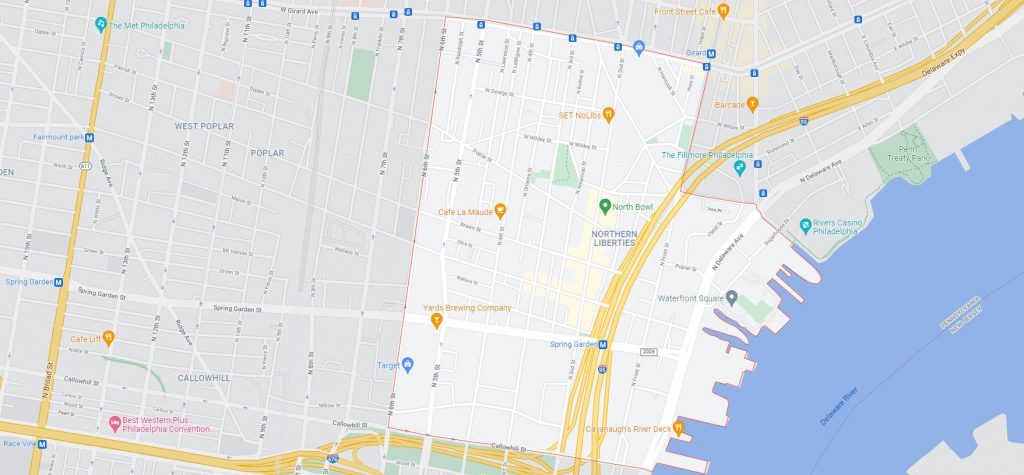
Northern Liberties. Credit: Google Maps
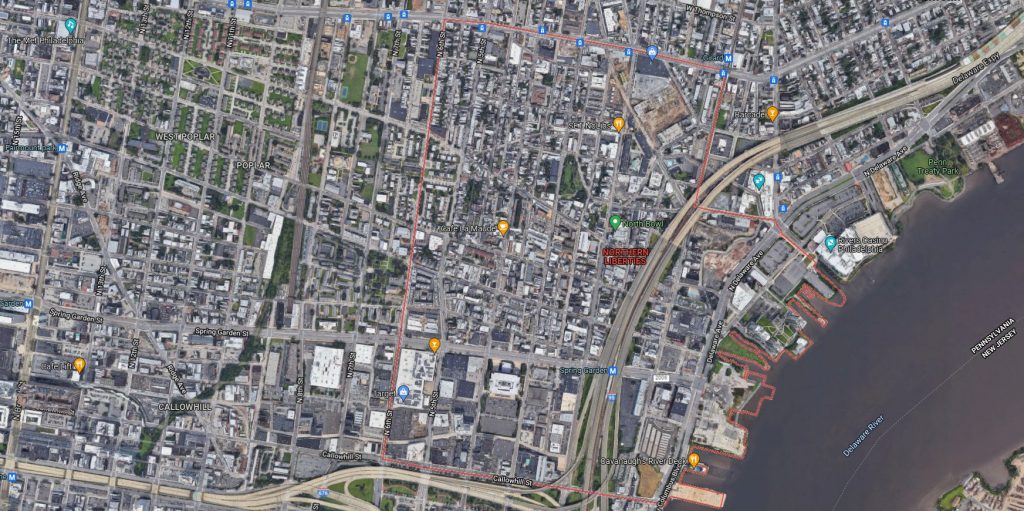
Northern Liberties. Credit: Google Maps
Early History: an All-American Metropolis
William Penn chose the original site for Philadelphia at the narrowest point between the Delaware and the Schuylkill rivers, expecting an even spread of settlement on the street grid laid out by surveyor general Thomas Holme in 1682. However, the commerce of the day hinged upon water transit, and early growth took place almost exclusively along the Delaware River waterfront, rather than by the narrower and less navigation-suited Schuylkill River to the west.
It is hardly surprising that Philadelphia’s first satellite towns also sprang up along the Delaware River, immediately to the north and south of the city proper. By the 18th century, two municipalities claimed the status of “Philadelphia’s first suburb,” Southwark to the south of South Street and Northern Liberties to the north of Vine Street; the status of the “true” title-holder is contested to this day.
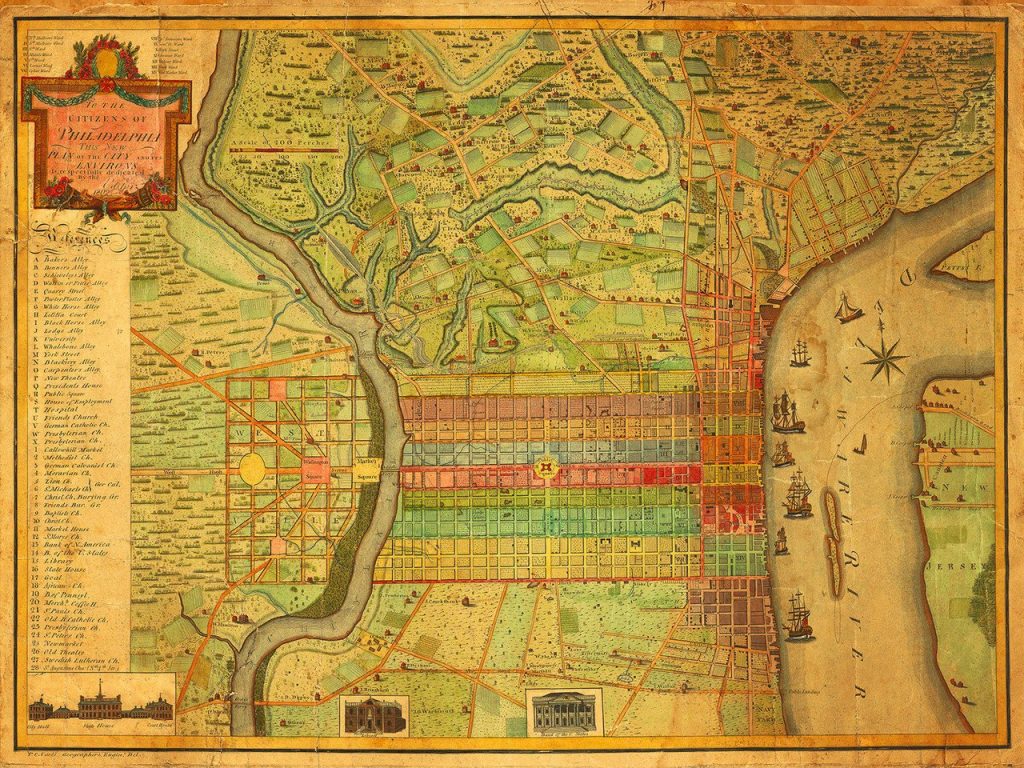
Philadelphia 1802 map. Credit: Charles P. Varle
True to its name, Northern Liberties was originally intended as a spacious township free of the bustling crowds of Philadelphia. Unsurprisingly, however, the town’s location ensured that it rapidly became major industrial and shipping center in its own right. By the standards of 1790, when the young nation conducted its first census, the town of Northern Liberties was a verifiable metropolis.
With a listed population of 9,913, in 1790 Northern Liberties ranked as the country’s seventh-largest city, holding more than two-thirds of the resident count of Baltimore, roughly half the population of Boston or Charleston, or one-third of the population of New York City or Philadelphia proper. Keep in mind that, at the time, the town officially extended only as far as present-day Canal Street, which lies well below the current boundary at Girard Avenue.
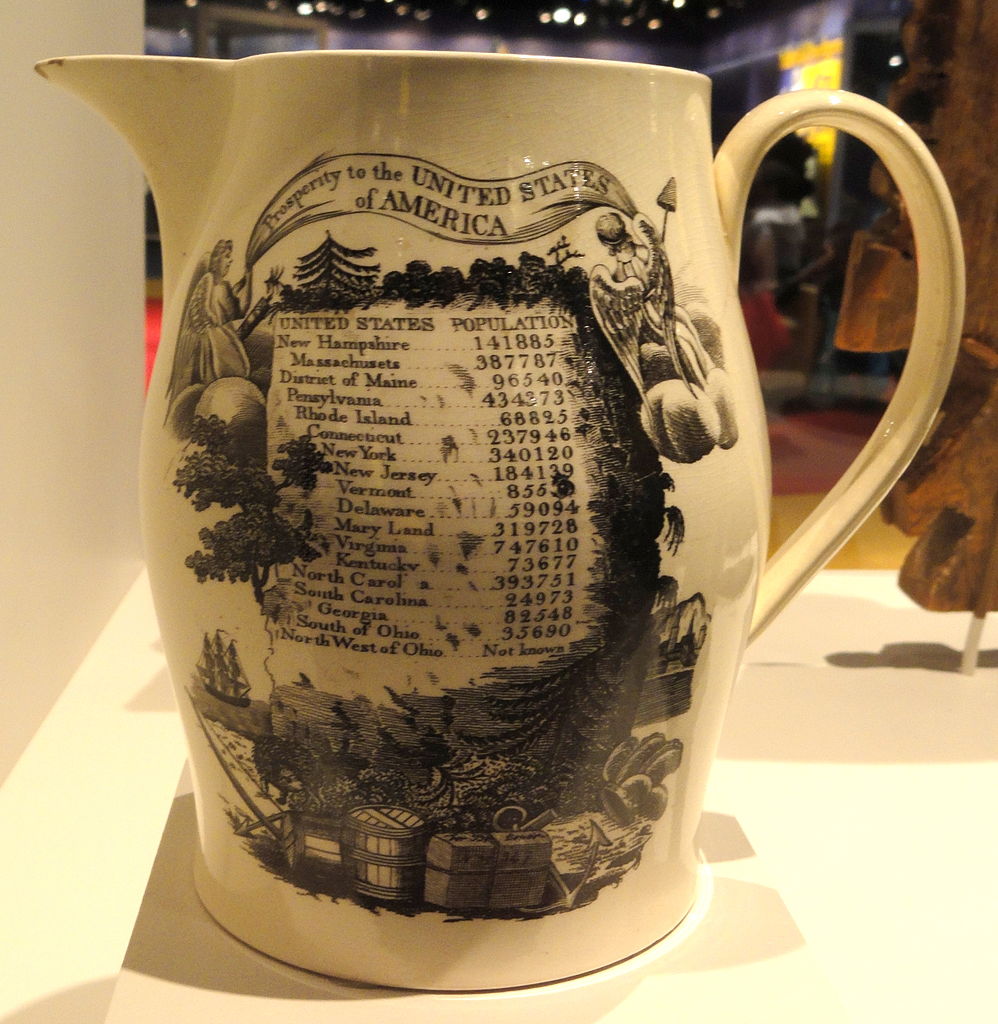
Commemorative pitcher with 1790 census results. Credit: Daderot via Wikipedia
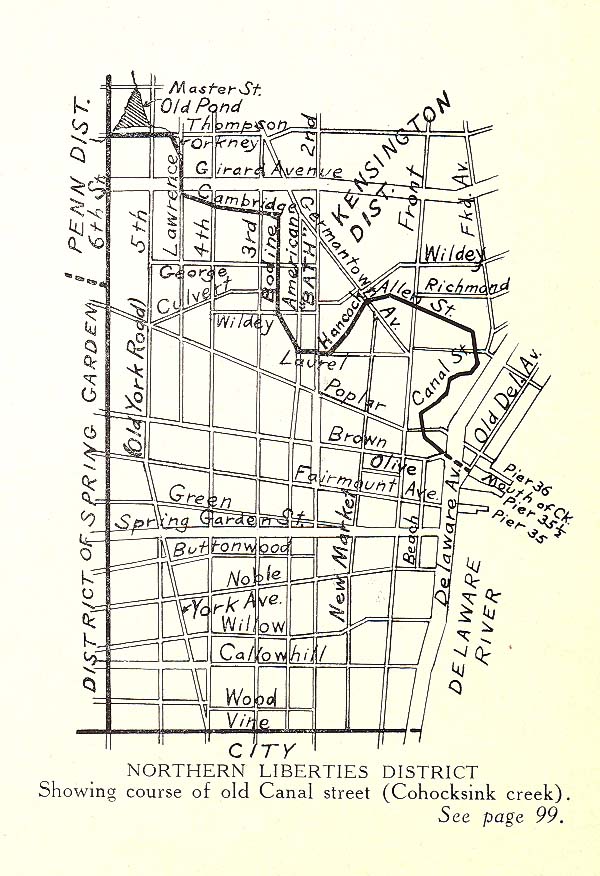
Northern Liberties. Credit: ArcGIS
Recent History: Boom, Bust, and Boom Again
On February 2, 1854, Pennsylvania Governor William Bigler approved the Act of Consolidation, which expanded the size of the city of Philadelphia from its original boundaries within present-day Center City to span the entirety of the Philadelphia County, extending the city to its present-day size. By this time, Northern Liberties had become an established industrial and maritime hub, boasting densely built-up city blocks and a significant immigrant population.
Northern Liberties continued to thrive well into the twentieth century. However, the neighborhood’s fortunes rapidly began to decline after World War II, crushed by a confluence of unfavorable factors. New manufacturing standards required large facilities with convenient access for trucking, shifting industry out of traditional city precincts such as Northern Liberties. In the meantime, the advent of containerization rendered the old piers at the Delaware River waterfront largely obsolete, with results that we covered in a recent article.
Containerization of shipping also contributed to globalization of the world’s manufacturing, further draining Philadelphia’s industrial sector. By the late 20th century, Northern Liberties was reduced to a shell of its former bustling self, with much of the industry and population gone. The city’s ill-fated urban renewal scheme to “modernize” the southern portion of the district along Spring Garden Street was intended to revitalize the district with contemporary, car-friendly manufacturing space, yet its legacy is largely the destruction of blocks upon blocks of storied prewar buildings and their replacement with forlorn parking lots and low-slung, boxy facilities.
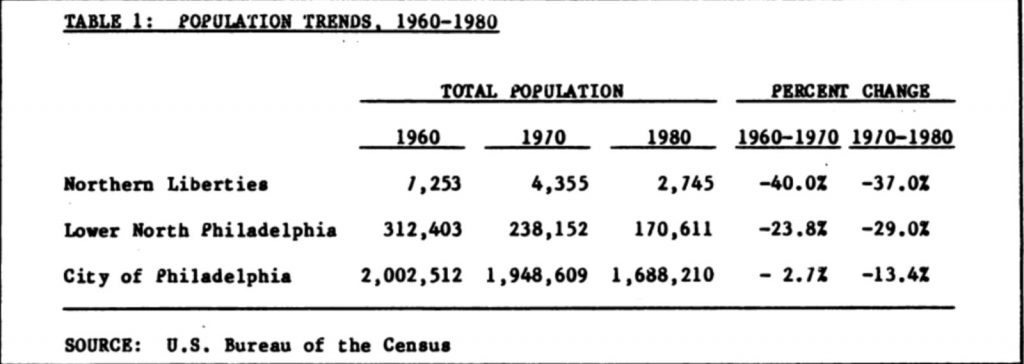
Northern Liberties. Credit: Philadelphia Neighborhoods Planning History via ArcGIS
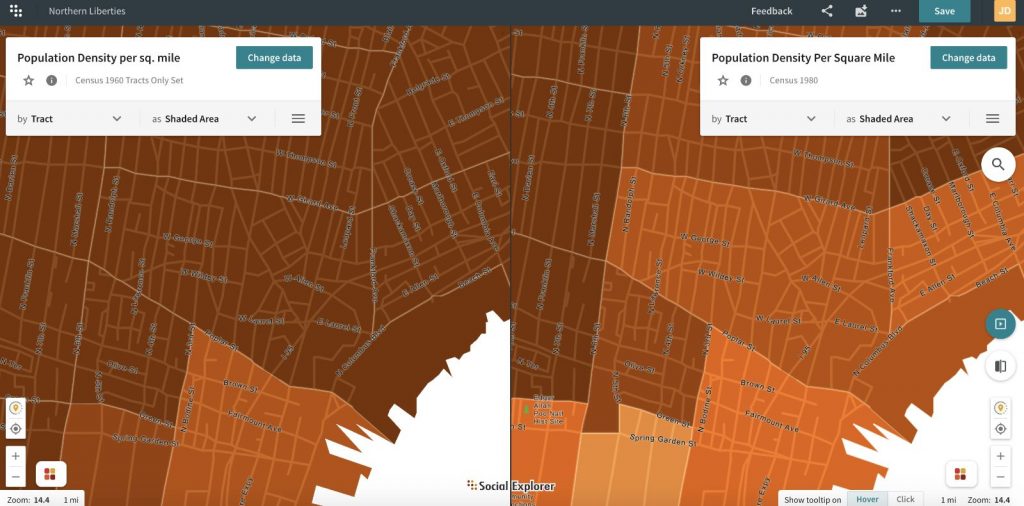
Northern Liberties. Credit: US Census via ArcGIS
By the 1990s, the neighborhood’s enduring favorable attributes, outlined in the introductory paragraph, set it on a path of a still-ongoing revival. For years, it has been known as a hub of bohemian culture boasting a mix of old and new buildings, artistic establishments, and quaint sidewalk cafes.

The Piazza at Northern Liberties. Looking south. Credit: Ii2nmd via Wikipedia
The District Today: The Three Liberties
Northern Liberties is an expansive neighborhood, spanning the territory between Callowhill Street and the Interstate 95 and 676 interchange to the south, the Delaware River to the east, North 6th Street to the west, and Girard Avenue to the north. However, the district’s designation is generally the result of historic legacy, as in practice it may be said to be comprised of three distinct neighborhoods.
Northwest Northern Liberties spans east-west between North 2nd and North 6th streets and north-south between Green Street and Girard Avenue. Northeast Northern Liberties stretches to the east up to the Delaware River. Southern Northern Liberties extends from Green Street southward to Callowhill Street.
We acknowledge that the generic names we give to each area are a mouthful and are somewhat confusing, but please bear with us lest we inflict you with potentially groan-inducing portmanteaus. For better or worse, SoNo is already catching on as a moniker for Southern Northern Liberties, and we are in no particular rush to add NoENo and NoWeNo for its respective northeastern and northwestern counterparts.
Northeast Northern Liberties
Piazza Terminal, 1075 Germantown Avenue
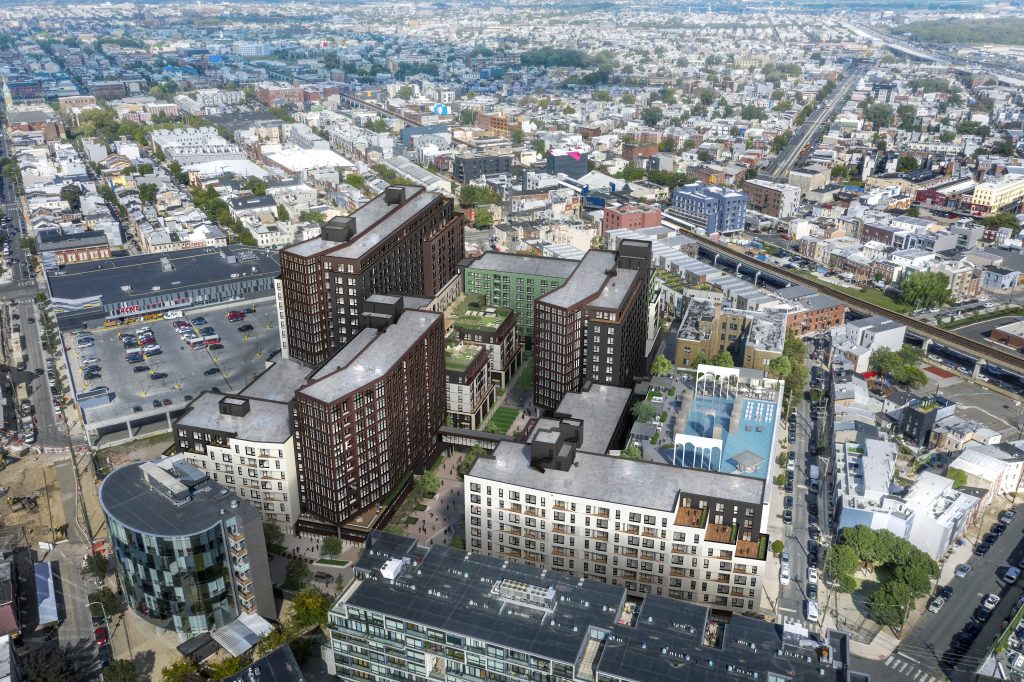
Piazza Terminal aerial rendering. Image via Post Brothers
Northwest Northern Liberties
817-21 North 3rd Street
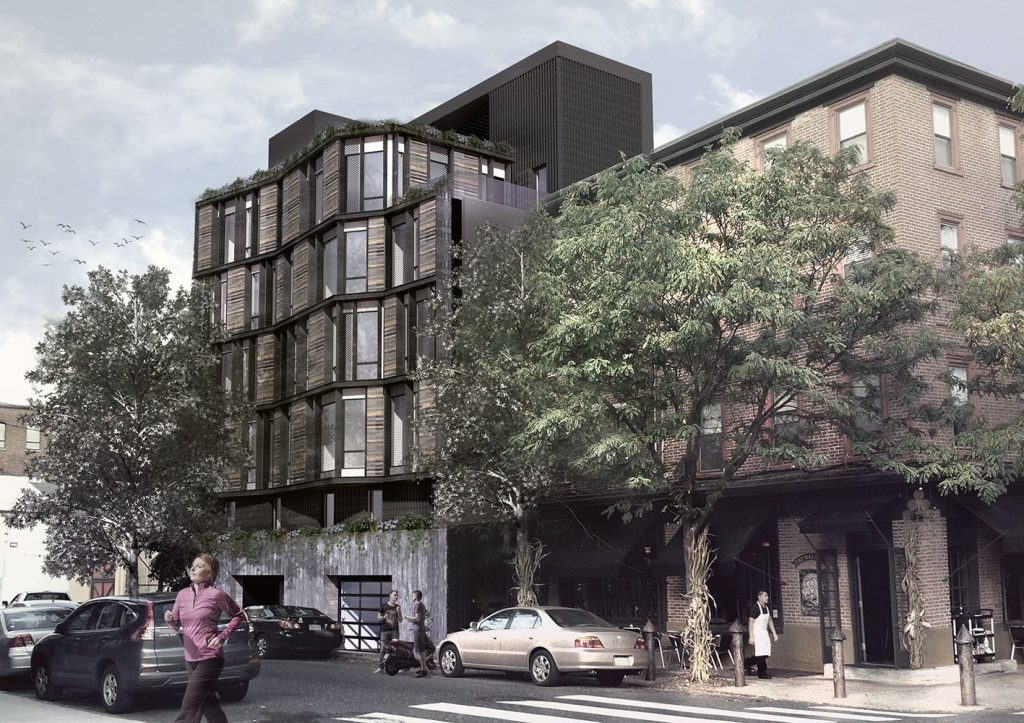
817-21 North 3rd Street. Credit: Atroim
Southern Northern Liberties
300 North Columbus Boulevard
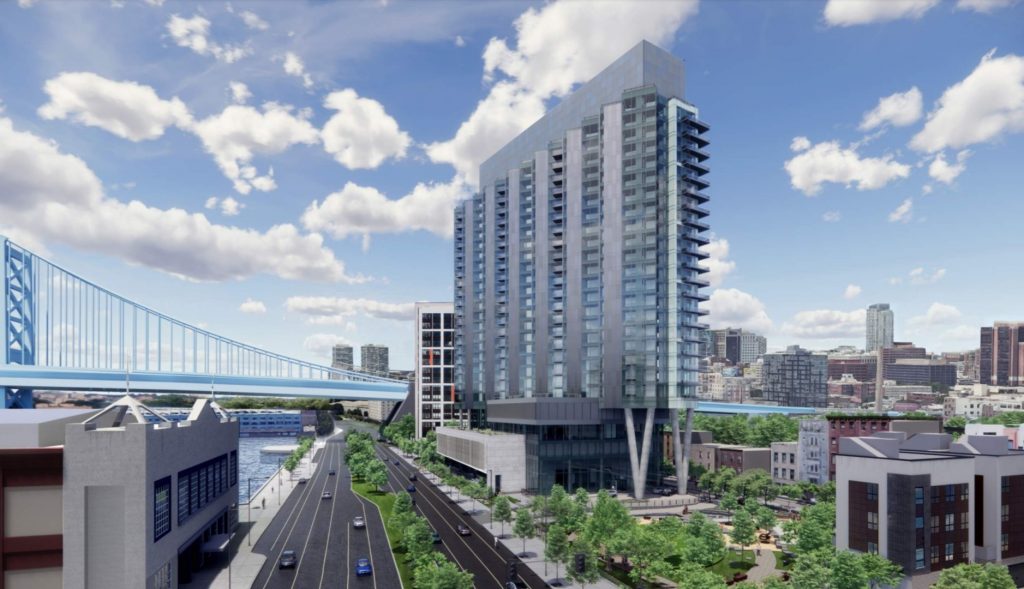
300 North Christopher Columbus Boulevard looking south. Image by Handel Architects
Subscribe to YIMBY’s daily e-mail
Follow YIMBYgram for real-time photo updates
Like YIMBY on Facebook
Follow YIMBY’s Twitter for the latest in YIMBYnews

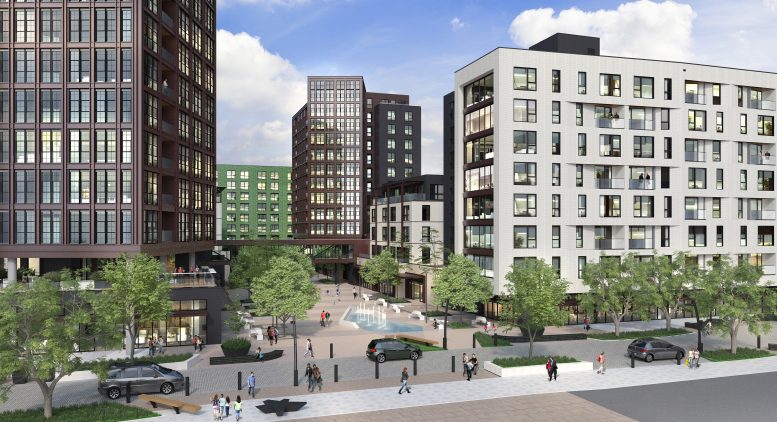
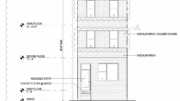

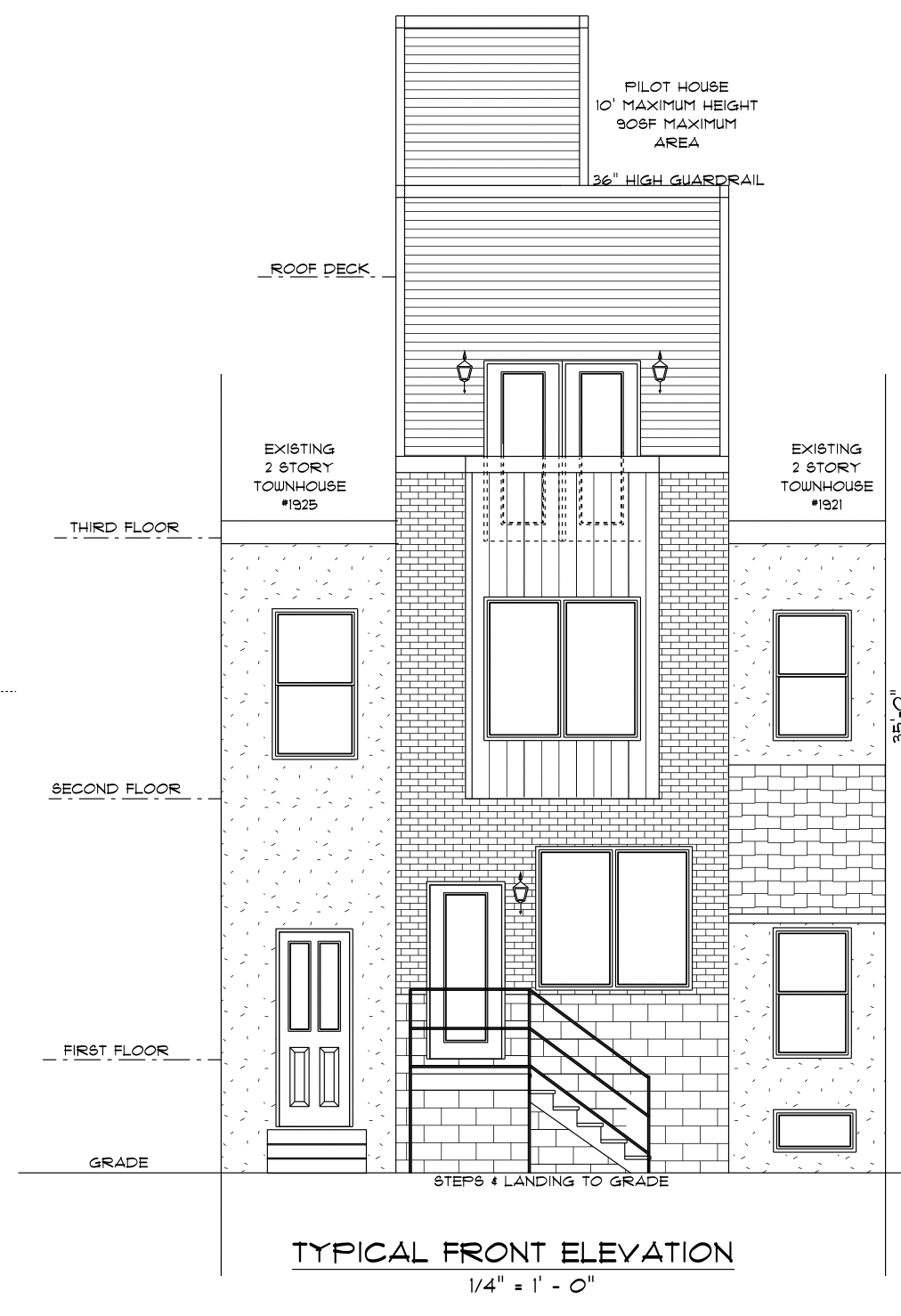
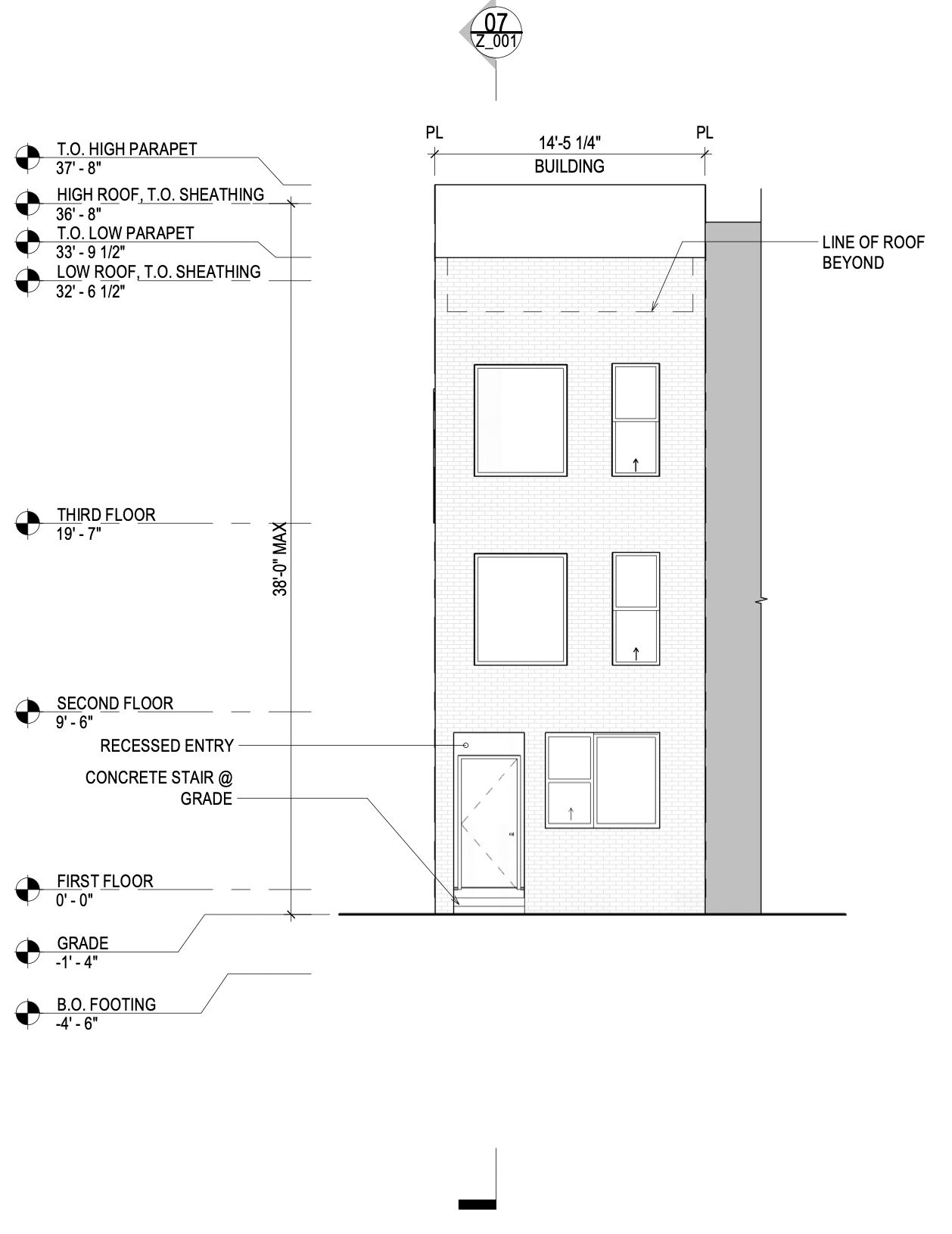
World Trade Square…
As for the developments, I’d rather not regurgitate my thoughts again.
Excellent journalism, Vitali. 😉